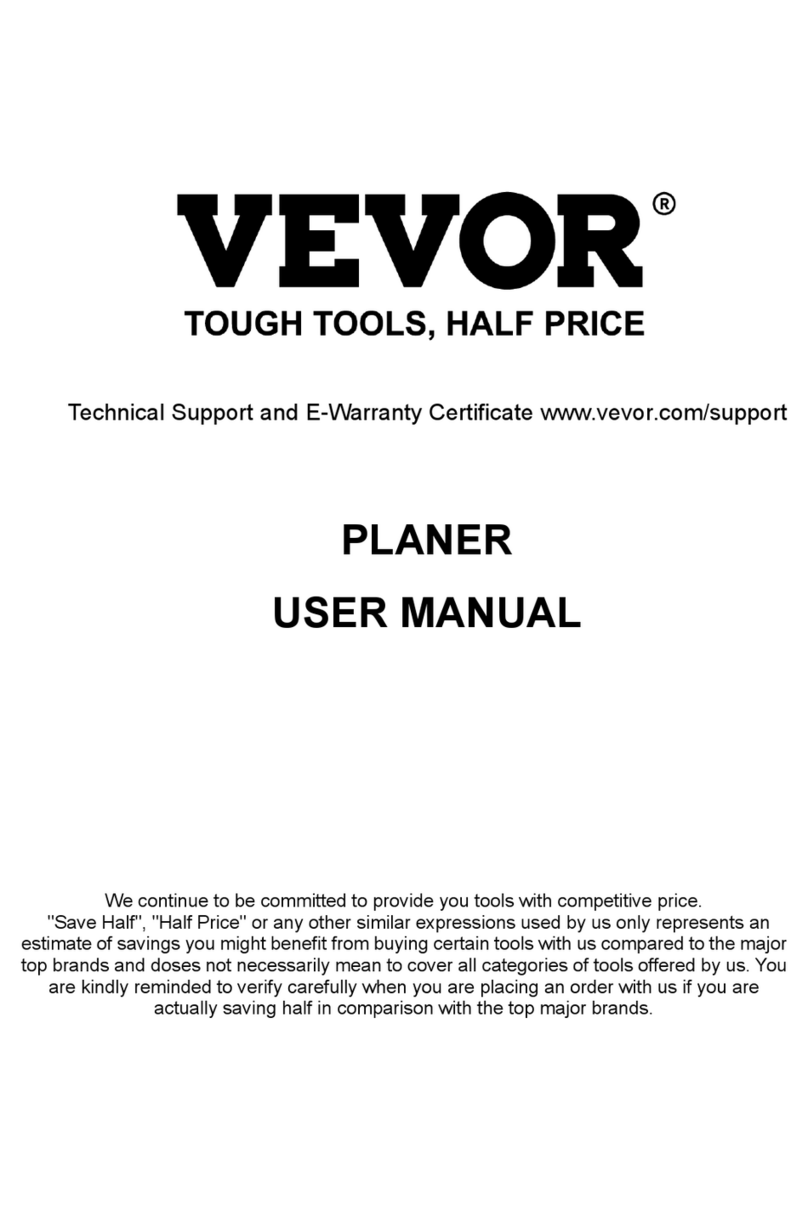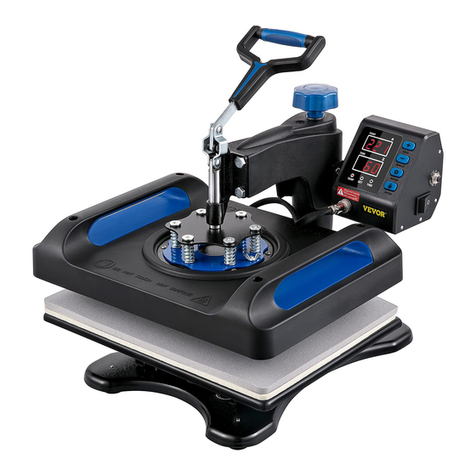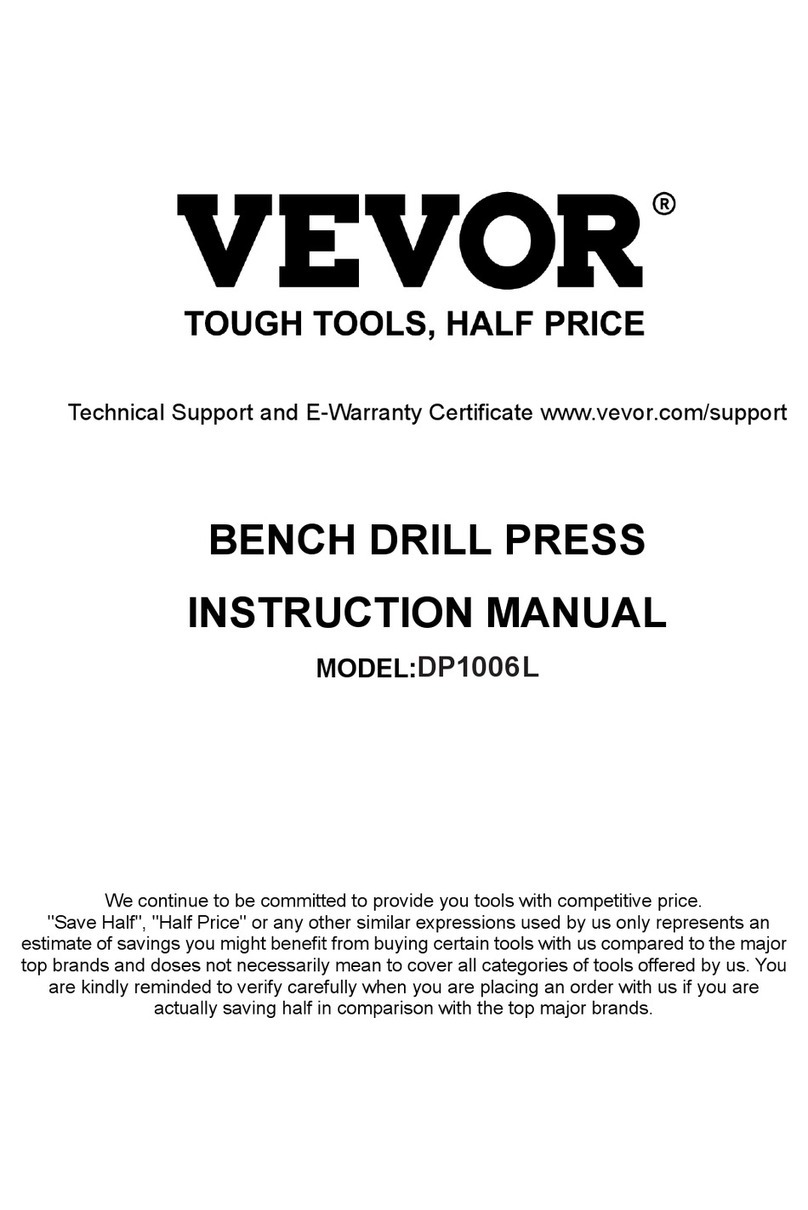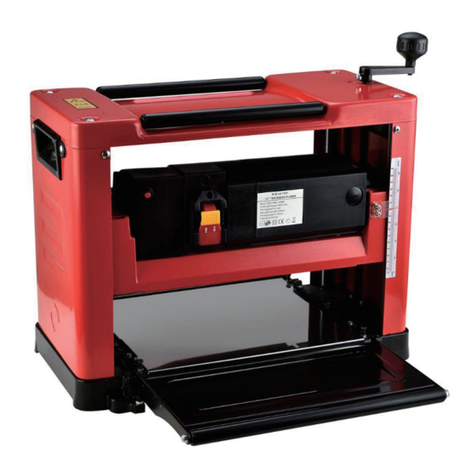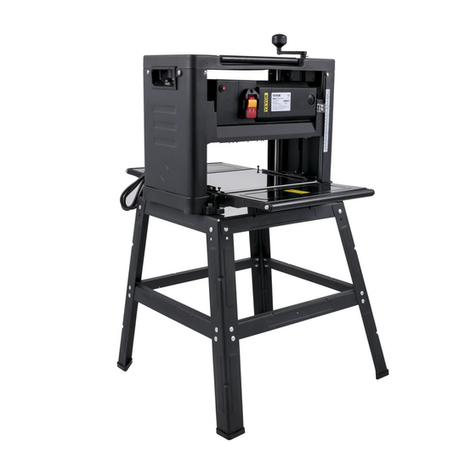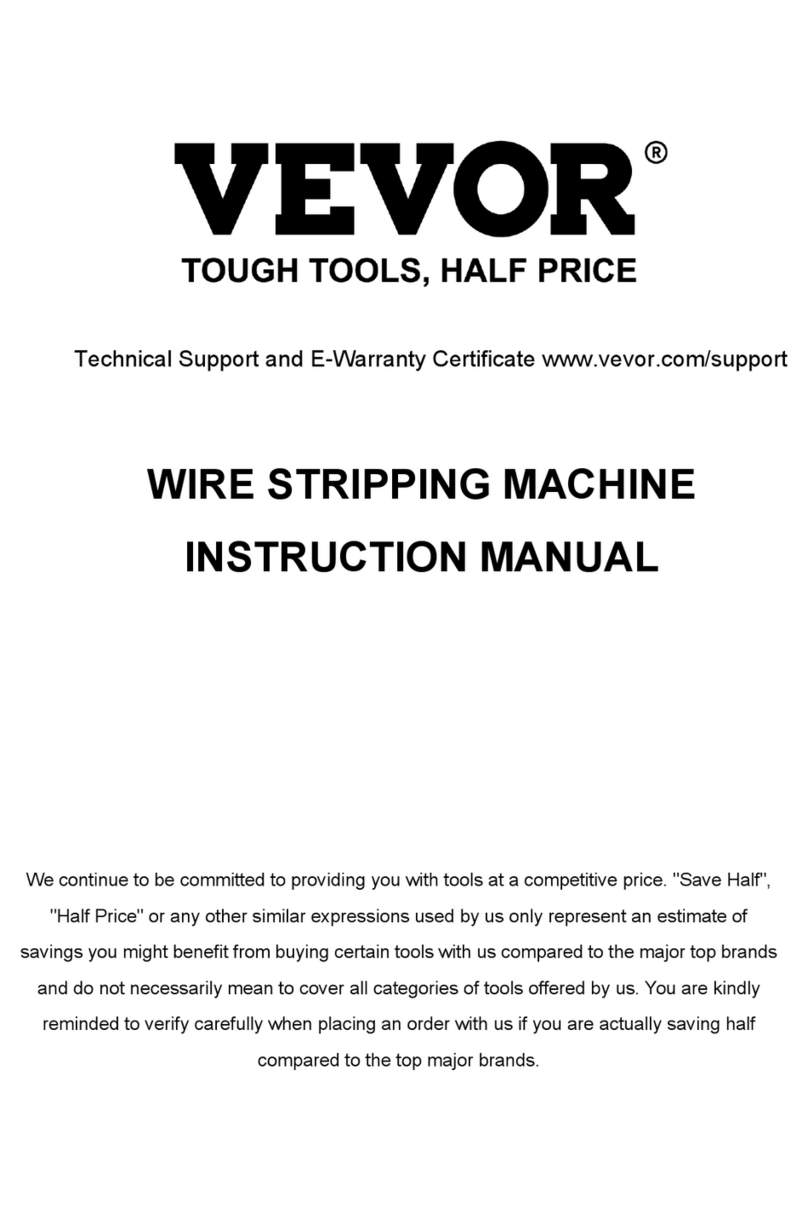
1. Keep your work area clean and well lit.Cluttered, dark areas invite
accidents.
2. Do not operate power tools in atmospheres, such as in the presence of
flammable liquids, gases, or dust. Power tools create sparks that can ignite
dust or fumes.
3. Keep children and bystanders away while operating a power tool.
Distractions can cause you to lose control.
PERSONAL SAFETY
1. Stay alert, watch what you are doing and use common sense when
operating a power tool. Do not use tool when you are tired or under the
influence of drugs, alcohol, or medication. A moment of inattention while
operating power tools may result in serious personal injury.
2. Use safety equipment. Always wear eye protection. Safety equipment such
as dust mask, non-skid safety shoes, hard hat, or hearing protection will
reduce personal injuries.
3. Avoid accidental starting. Make sure the switch is in the Off position
before plugging in. Carrying tools with your fingers on the switch or
plugging in power tools that have the switch on invites accidents.
4. Remove any adjusting key or wrench before turning the power tool
on.A wrench or a key left attached to a rotating part of the power tool may
result in personal injury.
5. Do not over-reach.Keep proper footing and balance at all times. This
enables better control of the tool.
6. Dress properly. Do not wear loose clothing or jewelry. Cover long hair.
Keep your hair, clothing and gloves away from moving parts. Loose clothes,
jewelry, or long hair can be caught in moving parts.
7. If devices are provided for the connection of dust extraction and collection
facilities, ensure these are connected and properly used. Use of these devices
can reduce dust-related hazards.
8. Only use safety equipment that has been approved by an appropriate
standards agency. Unapproved safety equipment may not provide
adequate protection. Eye protection must be ANSl-approved and breathing
protection must be NIOSH-approved for the specific hazards in the work
area.
WARNING!
ALWAYS wear safety goggles (not glasses). Ordinary glasses have only
impact-resistant lenses. They are not safety goggles. Wear safety goggles
that comply with ANSI Z87.1.
TOOL USE AND CARE
1. Do not force the power tool. Use the correct power tool for your application.
The correct power tool will do the job better and safer at the rate for which it is
designed.
2. Do not use power tool if switch does not turn it On or Off.Any power tool that












